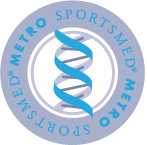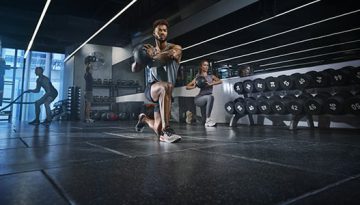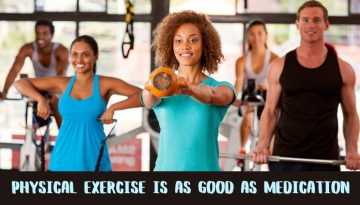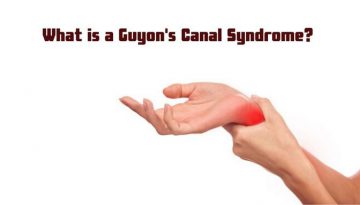Welcome to METRO SPORTSMED®
Partnering together to achieve your goals
If pain or injury is keeping you from living the life you want, METRO SPORTSMED®’S trained and certified physical and occupational therapists working in nine outpatient and inpatient sites throughout New York’s metropolitan area can help restore your wellness.
Founded in 1995, we use evidence-based therapies customized to your individual condition to help relieve your pain and return to your normal level of activity as quickly as possible.
Whether you suffer from back pain, post-surgical soreness, post-partum discomfort and mobility or balance issues, we have specialized programs for your relief and recovery.
Our state-of-the-art facilities in Brooklyn, Boro Park, Bensonhurst, Brooklyn Heights, Gravesend, Midwood, Park Slope, Staten Island and Williamsburg feature 125 caring professionals working with the most technologically advanced rehabilitation and fitness equipment available.

Sports Medicine (Physical Therapy)
Sports medicine is a young science that is actively developing, providing assistance to coaches and athletes during training. The difference is that sports physicians work with the human body, which is more physically overloaded and, accordingly, there may be more potential injuries and complications.
For a long time, sports medicine was more like primitive control and formal examinations of athletes. There were no clear recommendations on sports nutrition – there were simply no special supplements available for sale, and professional athletes used conventional products with a standard set of nutrients.
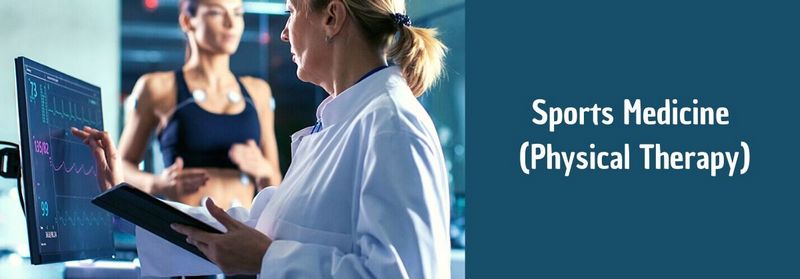
What is sports medicine?
This area mainly deals with the treatment and rehabilitation of sports injuries, as well as their prevention. In a broader sense, it includes many narrow disciplines. Sports medicine involves such specialists as physiotherapists, kinesiologists, biomechanics specialists, sports orthopedic surgeons, sports nutritionists, chiropractors, podologists, physical training specialists, etc. It also includes medical support and maintenance of conditions in altered physiological conditions. For example, Metro Sports, Sports Med, and Physical Therapist Brooklyn employs specialists in all these medical fields.
All professional athletes, as well as active lifestyle enthusiasts, are advised to periodically undergo sports diagnostics, which helps to prevent life threats when performing very intensive exercises. It is necessary to understand how the heart works at maximum loads – whether to take any preventive measures or to individualize the training program. Also, sometimes it is necessary to determine at what pulse your body goes into anaerobic work mode. This will allow you to timely adjust the load and achieve the tasks. A sports doctor makes an individual diagnosis plan – there are no general schemes in this area.
Tasks of sports medicine
From all of the above, we can conclude what sports medicine and sports doctors should do:
- assistance to the trainer in the selection of candidates for professional sports;
- determination of the optimal mode of work and rest individually for each athlete;
- recommendations on the type of food at different periods of activity;
- injury prevention due to increased physical exertion;
- monitoring the administration of pharmaceuticals;
- development of a set of measures to increase efficiency and improve results;
- proper treatment and rehabilitation after sports injuries;
- hygiene and general disease control;
- doping system in sports.
Sports medicine also studies the pathological processes that occur in high-level athletes. As a result of the unprofessional approach on the part of medical personnel who have no idea about physical activity, there were many such pathologies in the history of sports, including spontaneous deaths during training.
Prevention of diseases during training
It is possible that unforeseen events may occur during the trip and one of the competitors will become ill. Health care before the competition rests entirely with the sports doctor. Therefore, he or she must have knowledge of pharmaceutical products that are approved by the doping committee and do not contain prohibited substances, even if they were used as directed.
Preventive vaccinations are of great importance. In hot countries, where local insects transmit infections, to which U.S. athletes have no immunity, there is a risk of getting sick and getting to the hospital even before the competition. A physical therapist must know what diseases people from other regions of the globe are most susceptible to. Vaccinations are given in advance to protect competitors from infectious diseases.
For example, India is “rich” in malaria mosquitoes, hepatitis, fever, dirty water. Dysentery, typhoid fever and cholera are common in eastern countries. Caution should also be exercised in competitions in Mexico, Brazil. The local climate is favorable for the propagation of parasites in the water. Symptoms may include poisoning, digestive upsets, and athlete failure.
Diagnosis of athletes’ health status
For professional monitoring of the health of athletes, specialized medical equipment is used:
- X-ray apparatus;
- MRI;
- CT scan;
- ECG.
Preventive examinations are carried out regularly – 1 time per month in preparation for the competition.
Doctors often diagnose an increase in the number of coronary vessels in professional athletes. This is a kind of protective mechanism to provide oxygen to the heart muscle and growing body tissues. With a lack of nutrients – the building material for tissues – the body does not have time to build up new vessels. As a result, the heart lacks oxygen and the tissues die. Such a process is taking place against the background of enhanced training.
The diagnosis with the help of the equipment is very helpful in the description by the athletes of their feelings and well-being. But often, in pursuit of results, people hide their condition from doctors and, possibly, from themselves. In this mode, injuries most often occur, after which there comes a long period of treatment and rehabilitation.
Rehabilitation of professional athletes after injuries
The longest process is rehabilitation. During this period, large loads are contraindicated, because the muscles and tendons are unaccustomed to regular stress and there is a risk of repeated injury.
In this period, sportsmen are indicated:
- lymphatic massage;
- physiotherapeutic procedures;
- moderate loads;
- enhanced nutrition;
- drinking plenty of water;
- vitamins and mineral complexes.
Do not rush to switch to normal loads. The musculoskeletal system after an injury is very vulnerable. Experienced trainers in such cases control the load and keep them at an average level. According to the results of MRI and X-rays, a sports doctor monitors the state of tissues – whether they have recovered and whether they are ready for stress.
Regenerative medicine
It is important that the athlete understands that there is no need to rush at the stage of restoring the functional capabilities of the body. As they say – time heals, but you need to wait. The help of a psychologist or a sports doctor is of great importance. He or she can convince a person of the need to wait.
When restoring after major competitions, you just need rest, balanced nutrition and psychological peace.
Restorative medicine is a system of scientific knowledge, one might say it is a new word in the rehabilitation of patients. In sports, this means returning to previous form and continuing training. The recovery of athletes requires special funding, as it implies costs for:
- massage therapists and reflexologists;
- Spa treatment;
- purchase of special clothing to support organs or joints;
- special food.
Events are held both in private clinics and on the basis of sports rehabilitation centers like Metro Therapy or Sportsmed under the supervision of sports doctors.
Disclaimer: We have absolutely no relation with MOTION Sports Medicine и MOTION PT Group.
